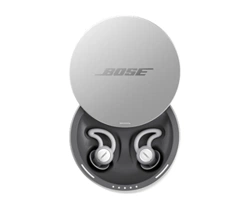Loading ...
Loading ...
Loading ...

PROBLEM WHAT TO DO
TROUBLESHOOTING
36
|
ENG
SYMPTOM SOLUTION
Sleepbuds™
don’t mask noise
eectively
Check that the sleepbuds™ are creating a seal in your ears to block
noise. Try speaking aloud. Your voice should sound mued. Shake
your head. The sleepbuds™ should stay secure.
Make sure that you’re placing the sleepbuds™ in your ears correctly.
Remember to rotate the sleepbud™ back and press the tip wing to
tuck it underneath your ear ridge (see page 18).
Make sure that you’re using the right size StayHear+ Sleep tip for
each sleepbud™ (see page 19). You may need a dierent size for
each ear.
In the Bose Sleep app, increase the volume of the current masking
sound. To be eective, the masking sound should be slightly louder
than the noise in your environment.
Try a dierent masking sound. No sound is equally eective in all
environments, so you should try each to find the one that’s most
eective for you.
Add new masking sounds using the Sound Library. In the Bose Sleep
app, tap the gear icon to access the Sound Library.
Sleepbuds™ don’t
receive Phone
Call Alerts
Make sure you have Phone Call Alerts enabled in the Bose Sleep app.
To enable Phone Call Alerts, tap the gear icon in the app.
Turn o Do Not Disturb on your mobile device. The sleepbuds™ follow
your device Do Not Disturb setting.
Your sleepbuds™ use Bluetooth Low Energy to connect to your
device and may periodically disconnect during the night. If you
receive a call when your sleepbuds™ are disconnected, you won’t
receive Phone Call Alerts.
StayHear+ Sleep
tips falling o
Securely attach the tips to the sleepbuds™ (see page 20).
Make sure that the sleepbuds™ are correctly oriented in the
StayHear+ Sleep tips. The Bose logo on the sleepbud™ should face
outwards and be right-side up, and both charging contacts should be
visible through the back of the tip (see page 20).
Loading ...
Loading ...
